- Hunter's Insights
- Posts
- Amazon Just Got Aggressive – Sponsored Brands Banners Now on PDPs
Amazon Just Got Aggressive – Sponsored Brands Banners Now on PDPs

Welcome to our weekly newsletter, Hunter's Insights!
In this special edition, we bring you essential Amazon updates and industry insights to keep you ahead in the fast-paced world of e-commerce:
💲 No More Guesswork: Amazon Breaks Down Every Seller Fee
🆕 Amazon Tests Sponsored Brands Banner Ads on Product Detail Pages
🔓 Amazon Exposes Fake Discounts with New Price Transparency Tags
📊 Hidden Metrics Now Available in Amazon’s Custom Analytics Dashboard
🤖 Product Pages Must Now Convince AI—Not Just Shoppers
📈 Amazon’s Manage Your Experiments Tool Just Got a Major Upgrade
📄 New Amazon Report Gives Sellers a Clearer Look at Profitability

💲 No More Guesswork: Amazon Breaks Down Every Seller Fee
Understanding Amazon fees has always been a challenge, even for experienced sellers. That is why Amazon is now launching an important update called “Fee Explainers,” a tool designed to increase fee transparency.
Key Highlights:
The tool clearly outlines each fee, explains the factors that influence it, and shares the calculation method (including the actual formulas).
It covers major fee categories, including referral fees, subscription fees, refund administration, customer returns, removals, and more.
It is integrated into preview tools like the Revenue Calculator and review tools such as the Transaction View page.
Why It Matters:
This is a significant win for sellers. It not only enhances clarity but also empowers you to identify unnecessary charges, optimize your pricing, and plan promotions with greater confidence. In short, it leads to fewer surprises and more informed selling.
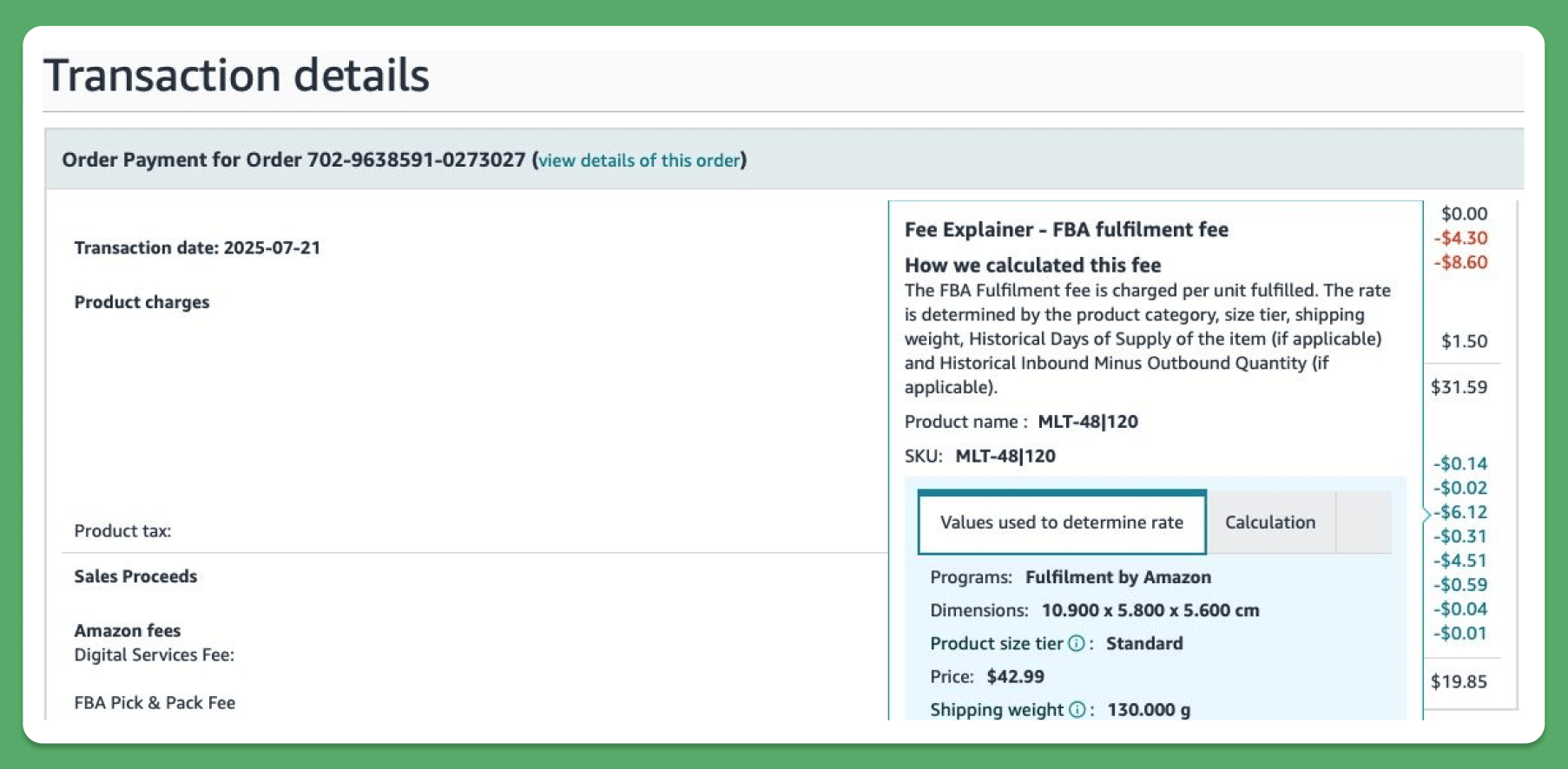
🆕 Amazon Tests Sponsored Brands Banner Ads on Product Detail Pages
Amazon is testing Sponsored Brands (SB) banner ads in a new, obvious location — directly on Product Detail Pages (PDPs). This could change how brands compete for attention in the final stage of the customer’s buying journey.
Key Details:
These SB banners appear above the product title or near the buy box on PDPs, offering premium visibility.
The new placement is ideal for offensive SB campaigns, where brands target competitor ASINs to redirect traffic.
It allows advertisers to inject brand messaging at a critical conversion point, potentially disrupting competitor sales.
The format resembles traditional display but uses sponsored brand targeting, offering more control over creative and ASIN targeting.
If implemented, this test offers a new opportunity for advertisers to increase market share. Expect higher CPCs and intent traffic. Now is the time to test Sponsored Brands campaigns with ASIN targeting against key competitors. Prepare brand-focused creatives and monitor performance closely.
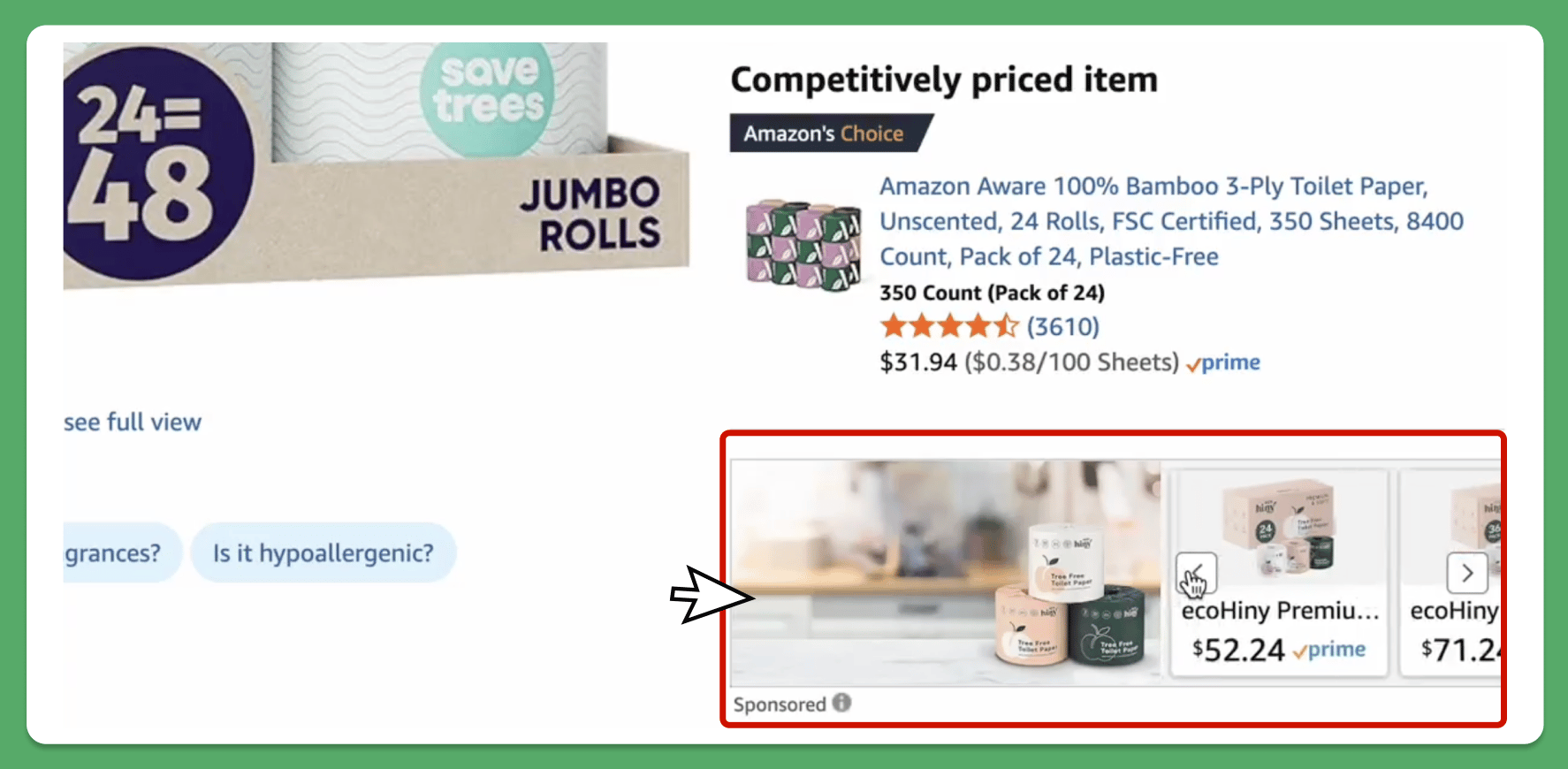
🔓 Amazon Exposes Fake Discounts with New Price Transparency Tags
Amazon now shows messages such as “Lowest price in the last 30 days” and “Was/List price” on product detail pages. This change makes it easier for customers to spot fake markdowns and encourages sellers to reevaluate their discount strategies.
Key Takeaways:
Discounts remain effective, especially when they create urgency or visibility through Coupons and Lightning Deals.
Improved search rankings can result from increased conversions during short, meaningful promotions.
Artificial discounts can backfire; they damage trust and negatively impact long-term brand value.
Use discounts to reward customer loyalty or clear out slow-moving inventory rather than relying on them as a standard pricing strategy.
Shoppers are becoming more aware of pricing tricks. To remain competitive, sellers should focus on providing genuine value and offering intentional, limited-time deals instead of constantly applying markdowns.
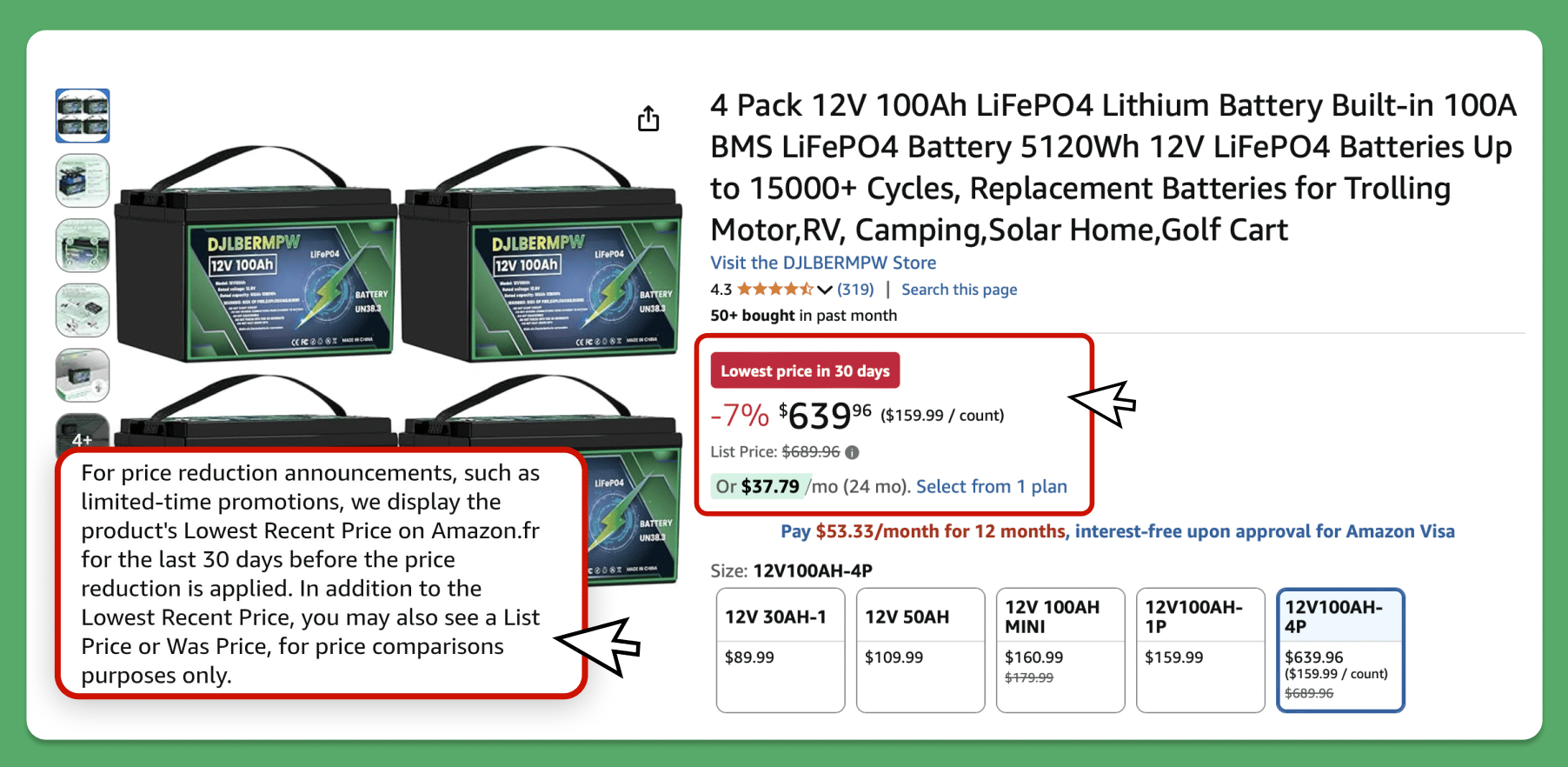
Amazon's new drag-and-drop analytics tool is not only flexible but also highly revealing. The dashboard now features previously hard-to-access metrics that users can analyze with just one click.
The standout additions:
Net Ordered GMS: This metric shows the actual revenue after accounting for discounts, promotions, and cancellations, making it ideal for profitability analysis.
Promotion Discount Amount: This quantifies the total savings for customers, helping businesses evaluate the value of deals against their margins.
Promo Sales from Units Ordered: This reveals the actual revenue generated by discounts, providing insight into the effectiveness of promotional strategies.
Promotion Discount Percentage: While Amazon includes this figure, there are concerns within the community regarding its accuracy, as the calculations may not align properly.
Why It Matters:
With this dashboard, there’s no need for manual calculations—deep insights are just a drag-and-drop away. It's perfect for identifying trends, assessing the effectiveness of promotions, and making informed, data-driven decisions.
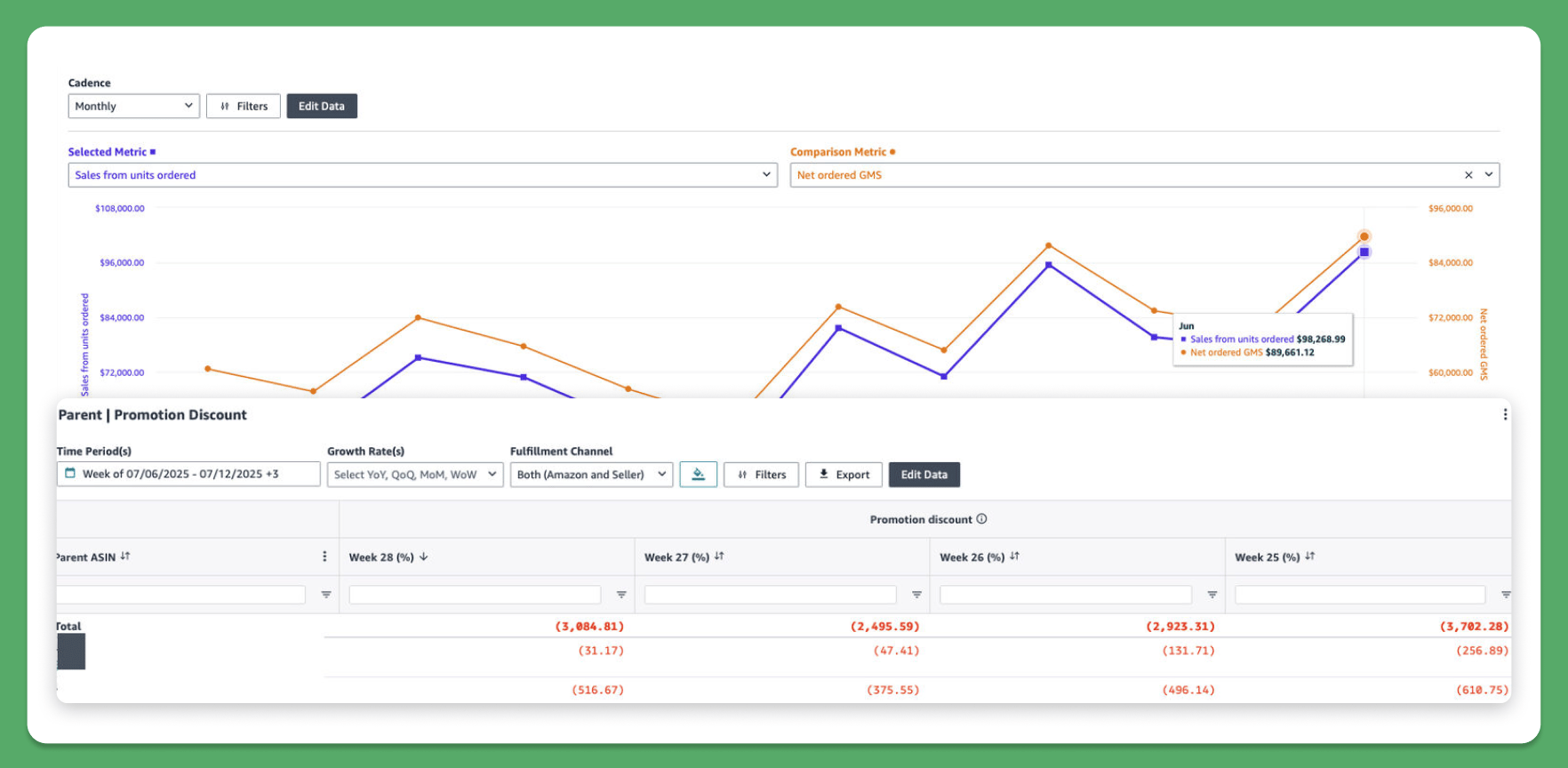
🤖 Product Pages Must Now Convince AI—Not Just Shoppers
Amazon’s AI assistant Rufus introduces a new optimization approach focused on being recommended by the AI. It transforms customer queries into dynamic product suggestions using content, reviews, and backend data.
Key updates:
Rufus selects products based on relevance rather than sales volume, bypassing traditional rankings.
Sponsored placements are being tested within Rufus Answers.
Every query helps train the model, refining Amazon's understanding of customer intent and behavior.
Product detail pages (PDP) now prioritize AI recommendations, relying on structured data, natural language, reviews, Q&A, and compatibility fields.
Why it matters: If your listing lacks clear answers or has poorly organized backend attributes, Rufus will overlook it, regardless of product quality.
What to do now: Audit top listings, clean variation logic, use structured fields, and think like a scriptwriter for AI rather than just a shelf optimizer.
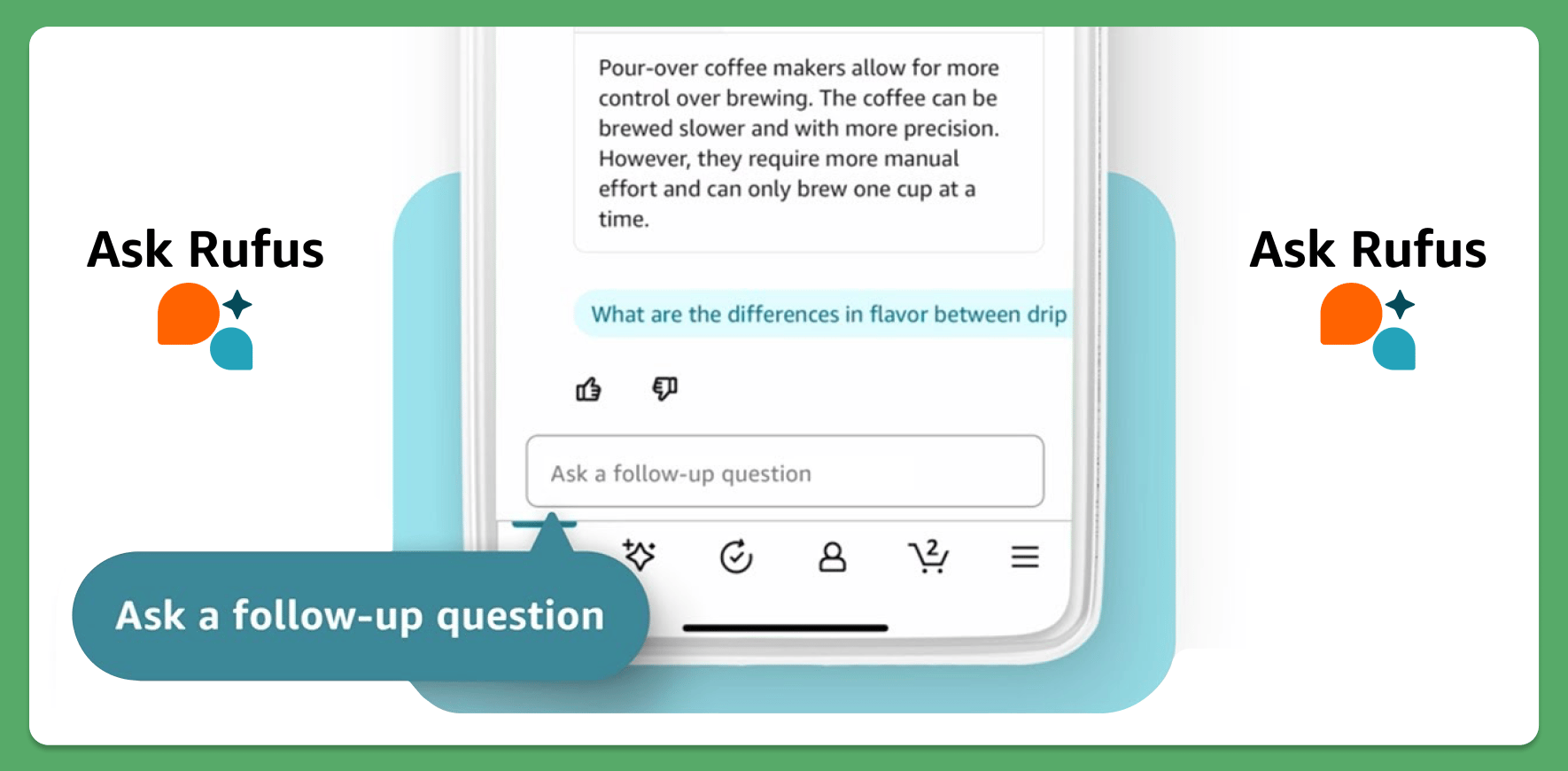
📈 Amazon’s Manage Your Experiments Tool Just Got a Major Upgrade
Amazon's multi-variable testing tool, Manage Your Experiments (MYE), has traditionally been cumbersome and slow, causing frustration among many sellers. Recently, significant improvements have begun to roll out.
Key updates:
The tool now rotates through multiple variables, speeding up the testing process.
It displays top-performing combinations, making results easier to interpret.
You can refresh multiple elements at once rather than testing one variable at a time.
Why this matters:
MYE is now more effective for brands that need quick optimizations. It assists sellers in refining their listings without lengthy experiments, reducing guesswork, and shortening the testing cycles.
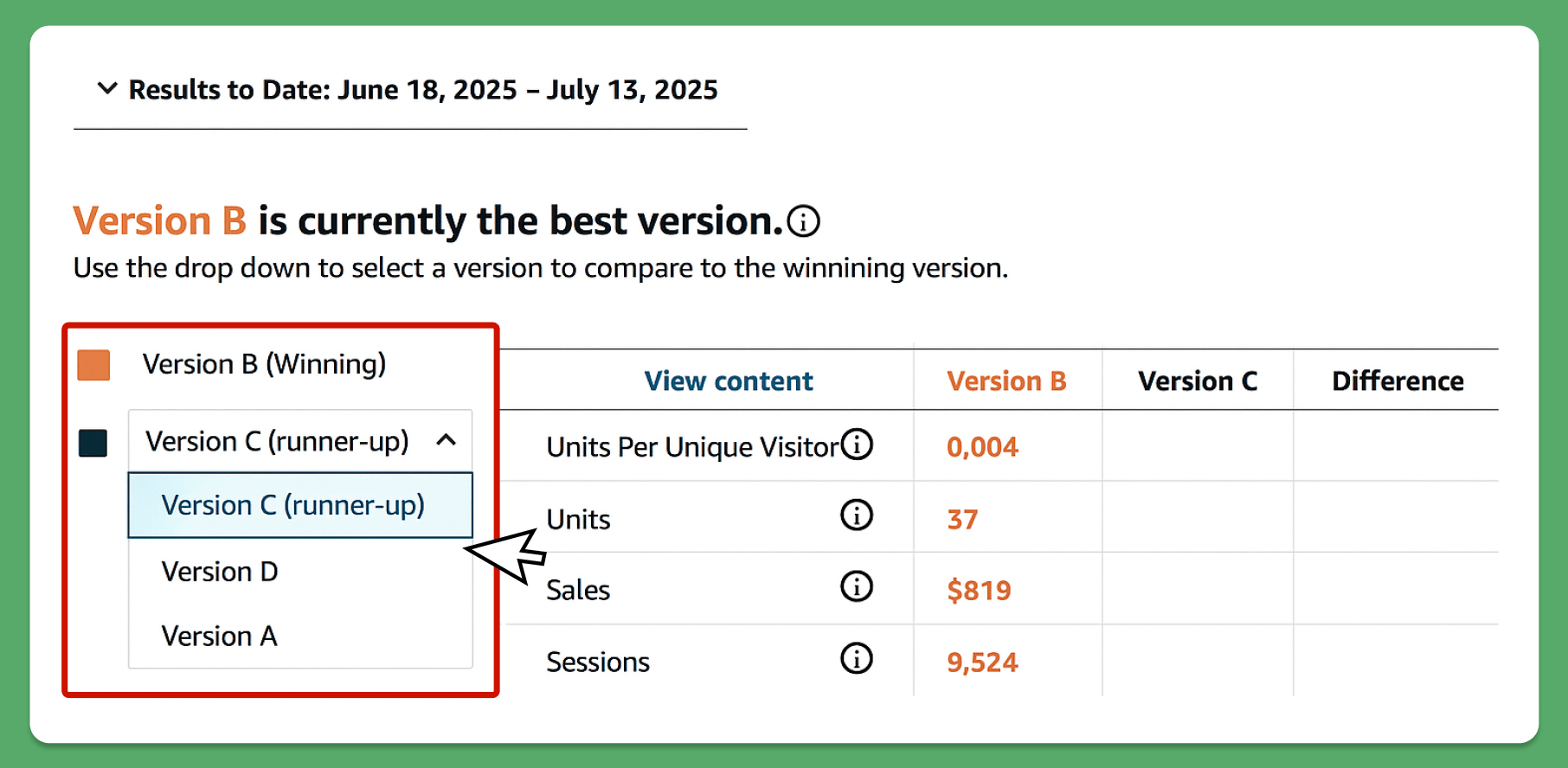
📄 New Amazon Report Gives Sellers a Clearer Look at Profitability
Amazon has introduced the Fees & Economics Preview Report, a new tool designed to help sellers understand the actual costs of operating on the platform.
Key features:
30-day forecasts for all major fees, including fulfillment, storage, returns, and advertising, broken down by SKU.
A detailed analysis of estimated profitability before scaling or launching new products.
Enhanced visibility into how fees and costs will affect margins, allowing sellers to avoid unexpected financial surprises.
Now available in Seller Central, this report provides greater transparency in forecasting and enables you to identify potential margin challenges before they impact your bottom line.
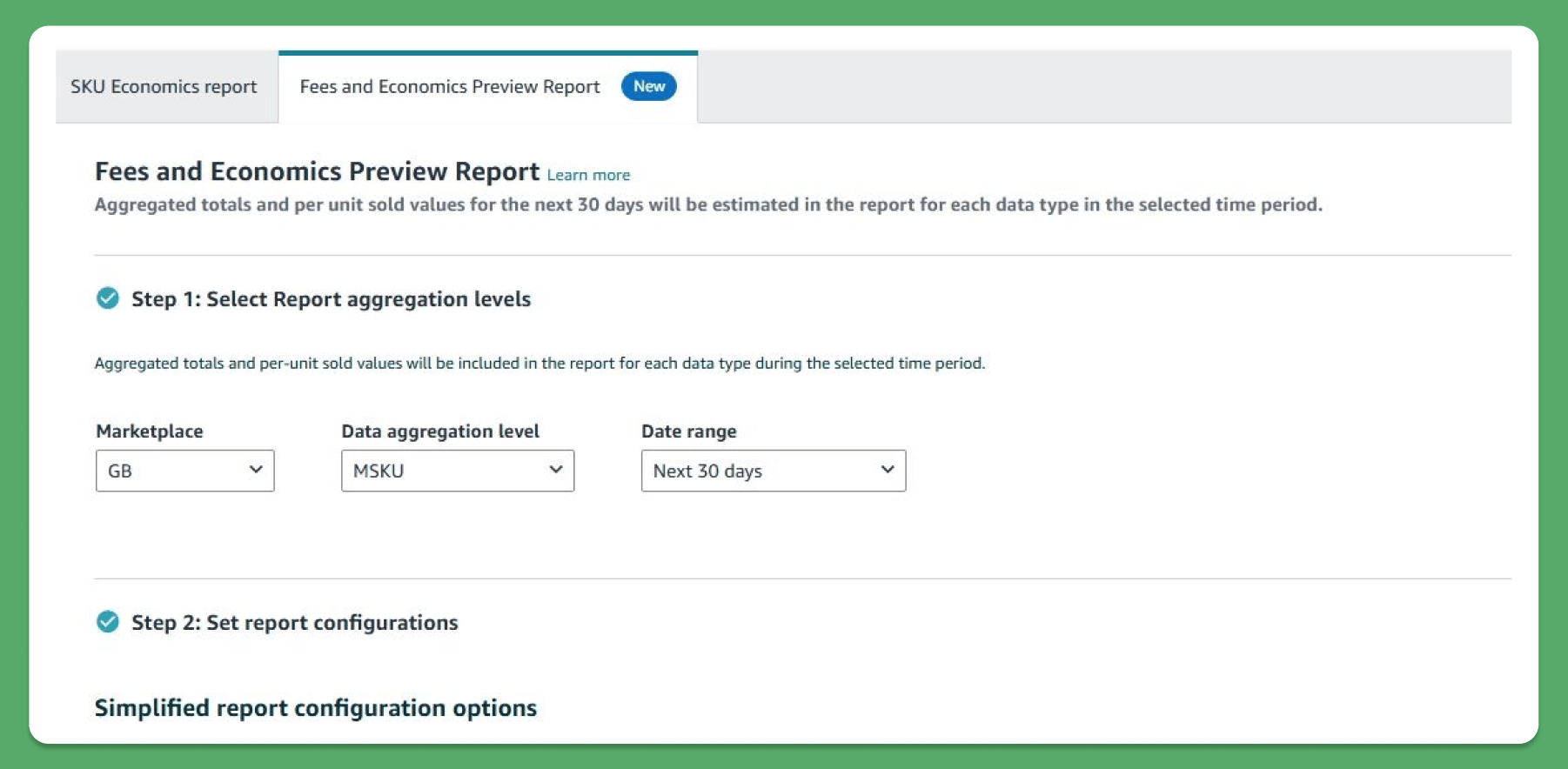
Crushing it with $20K+ monthly sales on Amazon?
Let’s help you break through to the next level – guaranteed! 🚀
Our team of Amazon growth experts specializes in scaling successful businesses like yours. We’ll perform a deep dive audit of your operations, from optimizing product listings to fine-tuning your ad campaigns.
Here’s what we offer:
Comprehensive Analysis: Pinpoint the bottlenecks holding back your growth.
Actionable Recommendations: Uncover high-impact opportunities to boost sales.
Proven Results: We don’t just advise – we deliver guaranteed results.
👉 Ready to scale?
Click below to claim your free audit and unlock your business’s potential!
How did you like today's Newsletter? |
Reply